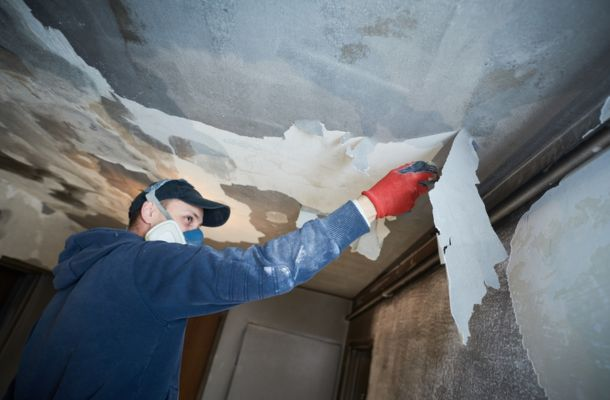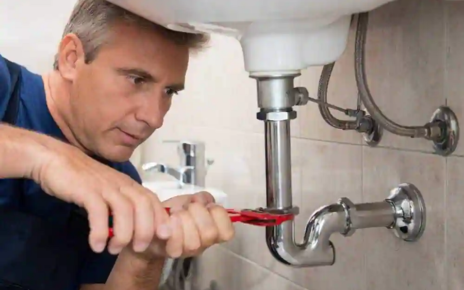Key Takeaways:
- Ensure safety and contact a fire restoration company immediately after a fire incident.
- Professional assessments are vital for identifying safety hazards and documenting damage for insurance claims.
- Advanced tools are necessary to uncover hidden risks, such as moisture detection devices to prevent mold growth.
- Trained professionals expedite the restoration process while adhering to appropriate safety regulations.
- Local fire restoration companies have expertise in specific regional risks and can tailor services accordingly.
- Personalized service from local companies ensures plans meet individual homeowner needs effectively.
- Faster response times from local firms minimize damage and promote quicker recovery.
- Advanced cleaning methods, like thermal fogging and soda blasting, effectively restore properties from fire damage.
- Structural integrity assessments and safety measures are essential during restoration to prevent future hazards.
- Effective smoke and odor remediation techniques are crucial for restoring air quality and property environment.
- Understanding common fire risks helps homeowners implement preventative measures to avoid incidents.
- An emergency plan, including evacuation routes and family communication strategies, is critical for preparedness.
- Regular home maintenance and inspections can significantly enhance fire safety and resilience against potential incidents.
Understanding the Fire Restoration Process: From Damage Assessment to Recovery
The Initial Steps: What to Expect After a Fire Incident
Following a fire incident, the aftermath can be overwhelmingly chaotic, filled with uncertainty and distress. The initial steps in the fire restoration process are crucial for securing the safety of everyone involved and laying the groundwork for recovery. Firstly, it is important to ensure that all individuals have been evacuated to safety. Once the fire department has declared the premises safe, the property owner must consider contacting a fire restoration company immediately.
The first point of contact typically involves an emergency response team assessing the situation, providing a sense of comfort and clarity. These professionals will begin with a preliminary assessment of the damage. They will determine immediate safety hazards such as unstable structures, lingering smoke, and any toxic fumes. This assessment also includes photographing the extent of the damage, which is vital for insurance claims. Prompt action at this stage is critical, as lingering smoke and water can exacerbate damage, leading to mold growth and further deterioration of the property.
Detailed Damage Analysis: Uncovering Hidden Risks
After the initial assessment, the process moves on to a more detailed analysis, often involving advanced tools and techniques. This stage is essential for uncovering hidden risks associated with fire damage that may not be immediately visible to the untrained eye. Professional restoration teams will utilize moisture detection devices to identify areas that have absorbed water, as hidden moisture can lead to mold growth within 24-48 hours.
Moreover, a comprehensive evaluation of the building’s structural integrity is performed. This includes checking beams, walls, and foundations to ensure they are safe to inhabit. Fire compromises the structural strengths of materials, and a detailed assessment can prevent future disasters. An effective damage analysis also includes evaluating the HVAC system, which might have absorbed smoke, leading to health concerns if not properly cleaned. All findings are documented and presented in a clear and concise manner to the property owner, adding another layer of transparency to the restoration process.
The Role of Professionals in Efficient Restoration
The fire restoration process requires expertise, equipment, and a series of coordinated efforts to restore a property to its pre-fire condition. Hiring a professional fire restoration service not only eases the homeowner’s burden but also ensures that the work is executed efficiently and safely. Trained professionals are well-versed in the National Fire Protection Association (NFPA) and other regulations governing safety during restoration efforts.
Experts employ specialized equipment that standard homeowners lack, including heavy-duty air scrubbers for smoke removal, industrial strength dehumidifiers for moisture control, and thermal imaging cameras for detecting heat spots hidden in walls and ceilings. Furthermore, experienced technicians are equipped to handle hazardous materials such as soot and charred debris properly. Their expertise not only expedites the restoration process but also mitigates risks, ultimately safeguarding the health of the occupants when they return to their property. Overall, engaging with professionals guarantees a thorough recovery and peace of mind, knowing that the restoration is being carried out accurately and effectively.
Why Choose Local Expertise: The Advantages of Hiring a Cary Fire Restoration Company
Community Knowledge: How Regional Experience Enhances Service
Choosing a local fire restoration company in Cary brings a wealth of advantages that extend beyond the standard service offerings. Local companies have profound knowledge of the area, understanding specific regional risks and climate conditions that lead to different fire outbreaks. For instance, certain neighborhoods might be more susceptible to wildfires due to nearby woodlands, while others may face risks from electrical fires during winter months.
This knowledge allows local restoration companies to tailor their services effectively, addressing specific fire risks and developing preventative measures unique to Cary’s community landscape. Furthermore, a strong local presence enables these companies to establish trustworthy relationships with community stakeholders, including local firefighters, building inspectors, and insurance adjusters. Such connections can be invaluable during the restoration process, facilitating smoother interactions and faster services.
Personalized Approach: Tailoring Solutions to Meet Unique Needs
One of the standout benefits of hiring a local fire restoration company is the personalized approach they provide. Unlike larger national franchises, local companies prioritize individualized service, adapting their restoration strategies to align with the unique needs and preferences of each client. This begins with an in-depth consultation that delves into a homeowner’s concerns, expectations, and budgetary limits.
Local companies are often more flexible due to their smaller size, allowing them to cater to specific client needs and work within limitations that may be unique to different homes. Their commitment to customer satisfaction fosters a collaborative environment where clients feel respected and heard throughout the process. This personalized attention can greatly impact overall recovery satisfaction, ensuring that homeowners feel reassured and well-informed at every stage.
Faster Response Times: Minimizing Damage and Maximizing Recovery
In fire restoration, time is of the essence. The quicker response a company can provide following a fire disaster, the less severe the damage is likely to be, thanks to minimized exposure to smoke, soot, and moisture. Local fire restoration firms typically possess the resources and manpower needed to mobilize quickly to the scene of an incident. Their understanding of the community allows for a faster response since they are based within the area and often have designated routes to navigate through potential traffic issues efficiently.
This rapid mobilization is essential for initiating the restoration process promptly, thereby reducing the overall cost of recovery and helping homeowners return to their normal lives as soon as possible. Moreover, timely intervention can significantly mitigate secondary damage, such as mold resulting from delayed water extraction. With a focus on immediate action, local restoration companies play a vital role in protecting both the property and the wellbeing of its occupants.
Essential Restoration Techniques: The Science Behind Fire Damage Repair
Advanced Cleaning Methods: Techniques That Work Wonders
The complexity of fire damage requires sophisticated cleaning techniques tailored to the varying types and levels of damage encountered. Among the various restoration options available, advanced cleaning methods stand out as the most effective approaches. One such technique is the use of thermal fogging, which involves the application of specialized chemical solutions that penetrate porous surfaces impacted by smoke damage. This method neutralizes odors effectively and removes smoke residue that standard cleaning techniques cannot reach.
Additionally, soda blasting and dry ice blasting are modern cleaning technologies utilized to remove soot and char effectively. These methods are non-toxic, reducing the impact on the environment while being gentle on surfaces often damaged by traditional abrasive methods. Professionals will also employ HEPA filter vacuums to capture particulate matter and allergens, ensuring that the air quality is improved during the restoration process.
These techniques illustrate a deep understanding of the chemistry involved in fire damage, emphasizing the necessity of employing trained professionals who can choose the correct methods based on the specific fire scenario they’re confronting.
Structural Integrity: Ensuring Safety While Restoring
Ensuring the structural integrity of a property after fire damage is paramount in the restoration process. The structural assessment goes beyond a basic visual examination; it necessitates engagement with engineers and architects who can evaluate load-bearing structures and foundation stability. Fire can severely compromise materials like wood, steel, and concrete, leading to potential hazards if not appropriately addressed.
During the restoration, qualified professionals work meticulously to stabilize the building, often incorporating shoring techniques that support weakened structures while repairs take place. In scenarios where certain components are beyond salvage, they may need to be replaced entirely, which requires thorough planning and execution. The emphasis on structural safety serves not only to restore but to prepare the property for future occupancy, ensuring that its new occupants will be safe.
Dealing with Smoke and Odor: Effective Remediation Strategies
The lingering scent of smoke after a fire can be one of the most stubborn remnants to eliminate. Effective remediation strategies focus on addressing both the visible residues of smoke and the invisible odors permeating different surfaces. One common method involves thermal fogging, a process mentioned earlier, which effectively neutralizes odors by mimicking the smoke and allowing deodorizing agents to penetrate the same surfaces affected by smoke.
Another solution is the use of ozone treatment, which works by generating ozone to oxidize odor-causing compounds and effectively eliminate smoke smells. While performing this method, careful consideration must be taken to ensure the safety of any inhabitants since ozone in high levels can be harmful to health.
Additionally, using activated charcoal in areas prone to smoke accumulation can facilitate odor absorption without the need for chemical interventions. These varied methods underscore the importance of a comprehensive approach to smoke and odor remediation, aimed at restoring not just the property’s appearance but also its overall environment.
Preventing Future Disasters: Tips for Fire Safety and Preparedness
Understanding Fire Risks: Common Causes and How to Avoid Them
Fire prevention begins with understanding the common causes of fires in residential areas. Electrical malfunctions, unattended cooking, heating equipment, and smoking materials are among the leading causes of home fires. Identifying these risks enables homeowners to adopt proactive measures to mitigate potential dangers. Simple steps such as ensuring that smoke detectors are installed and maintained, and practicing kitchen safety can drastically reduce the chances of a fire occurring.
Furthermore, educating family members about the importance of safe heating practices and clear escape routes in the event of a fire can enhance awareness and preparedness. Regular inspections of electrical systems and appliances also play a crucial role in catching issues such as frayed cords or overloading circuits, which can lead to ignitions. By being vigilant and informed, homeowners can significantly decrease their risk of fire incidents, safeguarding themselves and their property.
Creating an Emergency Plan: Being Prepared is Half the Battle
Creating an effective emergency plan is an essential task for every household to ensure preparedness in the event of a fire. An emergency plan should outline immediate actions to take when a fire is detected, including evacuation routes, meeting points outside the home, and a communication strategy for checking in with family members. Regularly practicing these drills can reinforce the importance of the plan and ensure everyone feels confident in their roles.
Additionally, homeowners should take inventory of all flammable materials stored in and around the house, devising a plan to minimize their presence or ensure they are stored safely. Awareness of potential hazards can guide calculated emergency responses, helping to minimize fear during actual incidents. Emergency plans should also consider the presence of pets; identifying how these beloved family members will be accounted for during an evacuation further strengthens the home’s safety culture.
Regular Maintenance: Keeping Your Home Fire-Resistant
Regular maintenance of a home plays a critical role in fire prevention and resilience. Establishing seasonal check-ups for smoke alarms, ensuring that all appliances are examined for potential hazards, and maintaining landscaping can limit your risk factors. Clearing away dead leaves and debris, trimming trees, and maintaining a defensible space around the home can significantly reduce the risk of wildfire spreading toward residential areas, especially in drought-prone environments.
Furthermore, aspects such as installing sprinkler systems and using fire-resistant building materials can enhance fire safety and significantly lower vulnerability during fire incidents. With a proactive maintenance strategy, homeowners can ensure their properties remain fire-resistant while contributing to the safety of their community as a whole. Ultimately, regular upkeep is an integral part of fire preparedness, equipping homes to withstand potential fires and protect their occupants.
FAQ
Question: What should I do first after a fire incident?
- Ensure that everyone is safe and evacuated before contacting a fire restoration company to assess the damage.
Question: How long does the fire restoration process usually take?
- The duration of the fire restoration process varies depending on the extent of the damage, but it can range from a few days to several weeks.
Question: Are fire restoration companies available 24/7?
- Yes, many fire restoration companies offer 24/7 emergency services to address urgent situations immediately after a fire incident.
Question: Will my insurance cover the cost of fire restoration?
- Typically, if your property is insured, fire restoration costs are covered under your homeowner’s policy; however, it’s best to review your specific coverage with your insurance provider.
Question: Can I stay in my home during the restoration process?
- It depends on the extent of the damage. If significant repairs are needed or safety hazards are present, it might be necessary to stay elsewhere until the restoration is complete.
Question: How can I prevent mold growth during the restoration?
- Prompt water removal and thorough ventilation during the restoration process are key. Professionals often use dehumidifiers and moisture detection tools to minimize the risk.
Question: What types of cleaning methods are used in fire restoration?
- Common cleaning methods include thermal fogging and soda blasting, which effectively remove smoke residues and odors from various surfaces.
Question: Should I attempt to clean up after a fire myself?
- It is not recommended to handle fire damage cleanup on your own due to safety hazards and the risk of further damage; it is best to hire trained professionals for effective restoration.
Useful Resources
- National Fire Protection Association (NFPA)
- American Red Cross
- Federal Emergency Management Agency (FEMA)
- Centers for Disease Control and Prevention (CDC)
- Safe Kids Worldwide
- U.S. Consumer Product Safety Commission (CPSC)
- National Fire Alarm and Signaling Code
- International Fire and Safety Association





